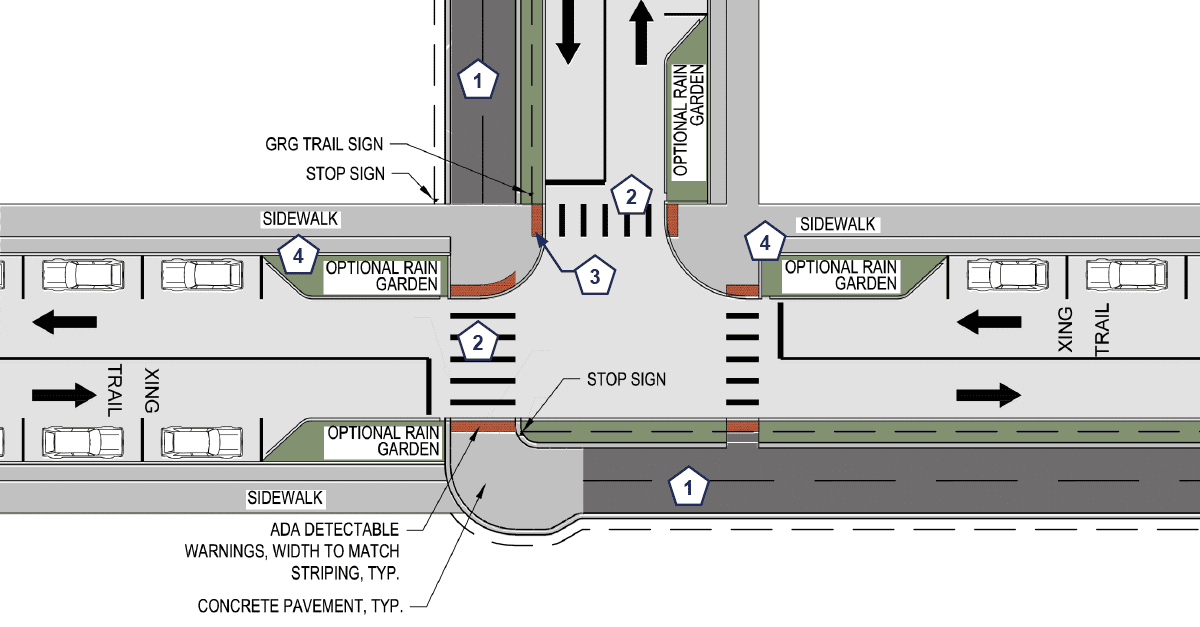Minor streets are typically local residential streets with speed limits of 25 mph or less, not more than one lane in each direction, but may include a center turn lane. The following apply where the trail crosses a minor street at an intersection:
Greenways should cross streets at a 90 degree angle. Where the greenway approaches a street at a skew, the alignment should be created so the crossing is 90 degrees to the street.
- Vehicular scale greenway signage should be incorporated adjacent to the crossing to alert motorists the greenway is crossing the street. All signage shall conform to MUTCD standards.
- Regulatory warning and stop signs shall be used for the greenway requiring users to stop before proceeding through the crossing.
- Where the trail and sidewalks intersect, concrete surface shall be applied.
- A speed table shall be implemented where the greenway crosses a street at a non signalized crossing. High visibility ‘PED XING’ markings shall be implemented on the street prior to the crossing to alert motorists of the greenway, conforming to MUTCD standards. Speed tables are not to be implemented on roads with a speed limit greater than 25 mph.
- Crossings should be designed to provide high visibility. High visibility lane markings and signage should be used to call attention to the crossing, conforming to MUTCD standards.
- For the greenway route, all crossings shall be the same width as the trail.
- All crossings shall comply with ADA and/or PROWAG guidelines. The use or configuration of Detectable Warnings and other ADA components may be phased out or significantly changed. ADA components shall comply with the latest ADA and/or PROWAG guidelines and local standards.
- Opportunities to incorporate stormwater management elements and pervious surfaces should be considered to establish the greenway corridor as a sustainable amenity for the communities it serves.
- Existing right-of-way (ROW) widths and locations shall be determined by designers prior to the performance of significant design work. All proposed improvements are to remain within existing ROW whenever possible. Adjustment to roadway widths, parking extents, and other changes to the geometry of trail and intersection components are preferable to ROW acquisition.
- While final design will be based upon specific intersection geometry, elements in the recommended layout should be considered as basis of design.
Plan Diagram

COMPONENTS: Click below for more information on each component.
1) Trail
2) Crosswalk
4) Bioretention